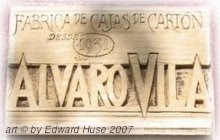
Enough said about alleged clumsy editing in "prebuy" paperwork, and on to the Future! on to Solar Stuff!
Solar power is the obvious way to go for supplemental heat at least.
The trick is to use what systems do work, the way they work best.
Solar often gets short shrift, but this writer's oil boiler has not fired up since late March or early April for heating domestic water - thanks to german-engineered Sunda Evacuated Tubes that work like champs - installed by the professionals at Clear Mountain Solar. That system was a no-brainer to choose for the site, simple, tried and true, and effective solar stuff for a specific and defined task.
In the search for some other solar opportunity to burn less heating oil made of that amazingly versatile treasure called petroleum, I have done hours of research recently, to come to the conclusion that I have enough solar exposure to a convenient outside wall (three areas really, but I am only doing one, maybe two), to warrant spending the time and energy on a solar hot air collector, that will be pretty much a passive thermosyphon system with the air flow assisted by a solar PV powered blower (that coincidentally goes on when the sun hits it - no power outages!).
I would encourage Springfielders everywhere to get on the stick and see how simple these supplemental solar hot air collectors are. If they have a good place to site them, then they are worth the trouble. In ideal situations there is no need for any mysterious wiring at all, and since they deal with air not water or other fluids, there is no mysterious plumbing either - any wood butcher can do it, if they can really figure out the system and plan it well and methodically implement it.
Collecting solar energy in water is five times more efficient for heating then air is, so forget about storing heat from solar heated air, and any solar collector may not get sun everyday anyway. However, by comparison to solar hot water, a solar hot air collector is way cheaper to build, and it is easy to design and build by the homeowner with moderate handyman skills.
Some rules of thumb that I see mentioned often in regard to designing a thermosyphon system for the home:
1) Solar hot air collectors are only supplemental heat sources, never primary. They work only while sun is impinging the collector, and only then - think of them as a space heaters, if the space that a solar hot air collector is designed for is too big you won't really notice the heat from it.
2) figure one square foot of collector surface area to cover ten square feet of living space to be heated.
3) keep the collector square footage less than twenty percent of the square footage of the living space to be heated.
4) no ducts or vents that move either the cold or heated air should be any less than six inches in diameter, if round.
5) success in all cases depends on rigorous attention to detail in the construction of all elements of the solar hot air collectors of any configuration. Solar hot air collectors are, to be sure, all by their very nature utterly simple to design and craft, but they must be scrupulously riveted, caulked, and sealed, and with the right materials.
6) if you are a plumber with solar exposure at all you need to be doing your home heating system from solar hot water heaters and cut back way dramatically on heating oil!!! Not to mention you need to be using solar hot water collectors for your domestic hot water!!! My conventional, primary oil burner practically does not ignite from Spring to Autumn thanks to the Sunda DHW collector array, and the water in the holding tank in the basement stays warm enough to make an appreciable dent in Winter oil burnage as well.
Consult www.sunda.de about evacuated tubes.
So then class- it transpires that a cleverly designed, fan-assisted, flatplate, tube or thermosyphon solar hot air collector will apparently produce useful heat for the appropriately-sized insulated interior space, if it can be sited facing about true South for four hours per day, and if it can be sited adjacent or close to where the hot air needs to be delivered.
Repeated claims and testimonials offer the same story, that this system will bring up the temperatures appreciably or dramatically, with different writers claiming to see anywhere from ten or fifteen percent, to as much as sixty percent in real savings on their primary heating energy bills.
Time will only tell, don't take my word for it.
For further information, I recommend this site as a good point of departure in your own quest to find a way without so damned much oil burning - http://www.builditsolar.com/Projects/SpaceHeating/Space_Heating.htm#NewBeerCanCol
I will make a report on this on-going Summer project as developments unfold. Meanwhile, back to spirals ...

















